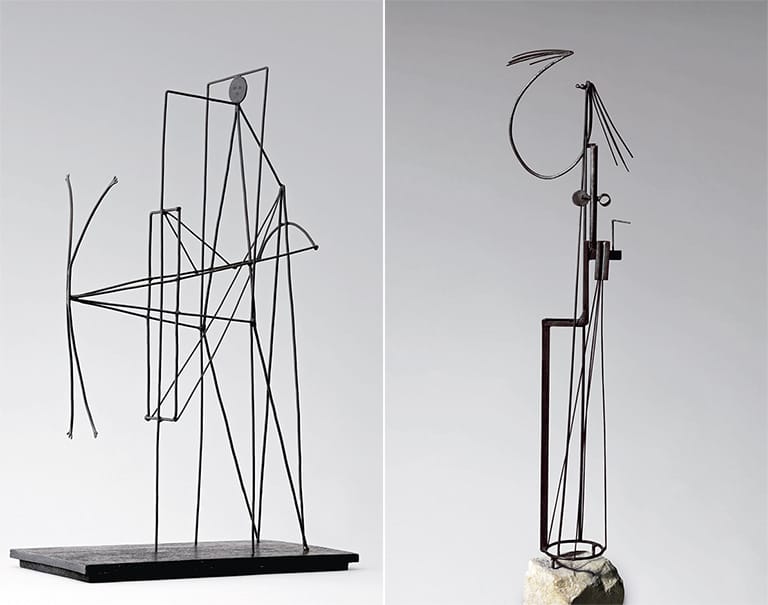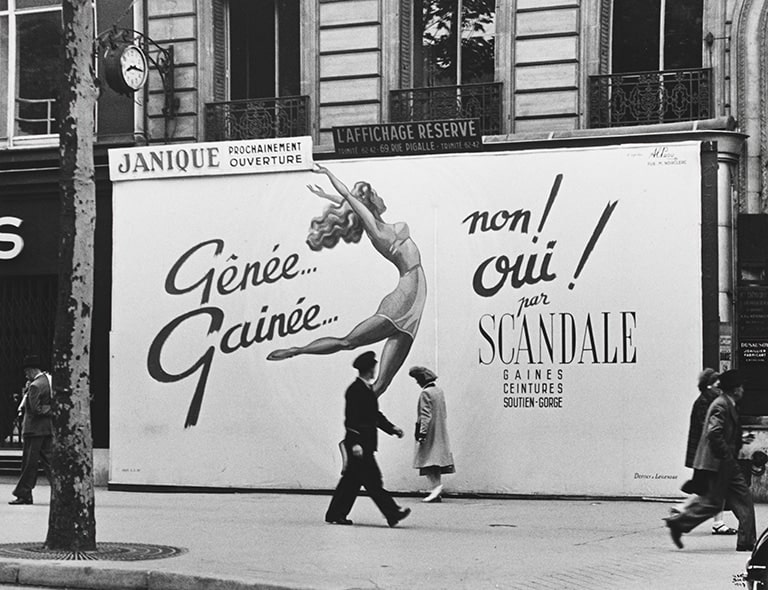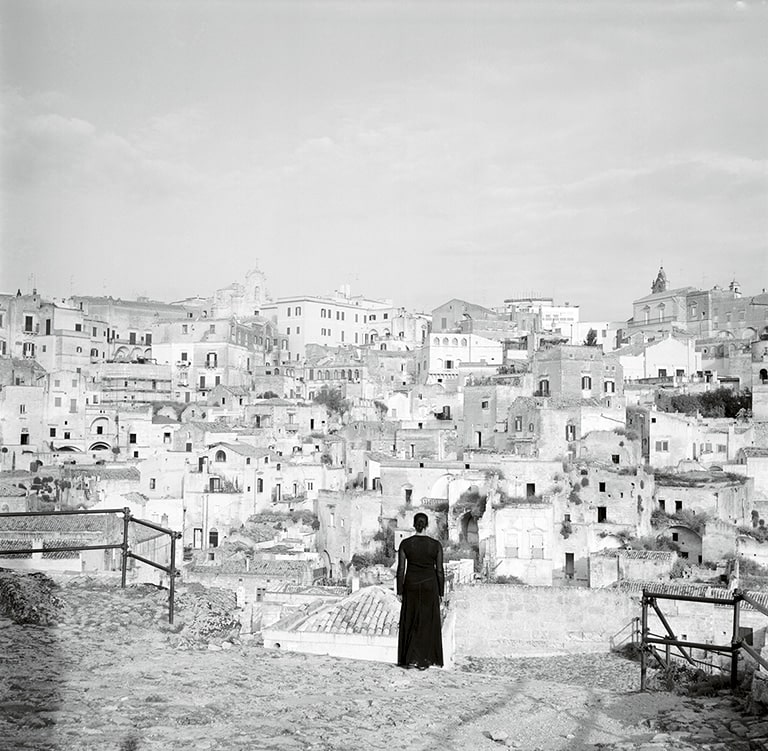Monólogo con un cuervo

Alberto García-Alix
Monólogo con un cuervo, 2011
© Alberto García-Alix. Courtesy of the artist and the Galería Juana de Aizpuru, 2021
© Fundación MAPFRE COLLECTIONS
Technique
Gelatin-silver bromide and selenium plating
Dimensions
Dimensions of printed area: 44,6 × 44,3 cm (17 9/16 × 17 7/16 in.)
Paper size: 60,9 × 50,5 cm (24 × 19 7/8 in.)
Inventory
FM002210
Description
In García-Alix’s portraits we find an atmosphere of trust and relaxation, even in characters from whom one might expect a certain distancing and defiance. García-Alix immerses himself in a personal world that he shares with his family, partners, colleagues and pets. This world also includes rooms and objects. He is fundamentally a portrait artist, even when no one is in the picture.Sometimes the everyday life of each person is the strangest and most difficult thing to unravel, as it is most intimate and particular aspect of each of us.Photography has the capacity to mystify this reality. However Alix’s vision is honest, he shares his experience with us in a fertile territory for spontaneous creativity that does not need to resort to structured themes and has no limitations whatsoever.
He began taking photographs without a clear knowledge of the medium and this freedom provided a freshness in his work that over the years has become part of the collective imagination of an era. García-Alix became acquainted with Diane Arbus’s work when he had already been taking photographs for some time, but it made as much of an impact on him as August Sander’s portraits had, not only because of the power of the image, but because of the poetry of the image. Alix’s portraits have that quality of enduring over time as portraits of a part of society and an era. As Arbus had done a decade earlier in New York, Alix was part of that movement in photography which, from the 1970s onwards, gave visibility to the marginalized population and which, in his case, helped him to assert himself and establish a relationship with society. He tells us about his passions within the scene of rock music which he is part of, as a member of the community. This a an honest manifest about a way of living: a space, an aesthetic, fetishes. His work is a logbook about his fellow travelers, from whom he draws his strength, but also his candor. In the apparent fierceness he shares with them, we discover the revealing element of a fragile and tender sensibility.
Les Nouveaux Imaginaires. Europalia. Museo de la Fotografía. Charleroi. (Bélgica) Ministerio de Cultura, 1985.
Alberto García-Alix, Fotografías. Textos de Luis Revenga (Más allá del darse) y Francisco Rivas (“El guión de una leyenda”). La Cúpula. Madrid, 1986.
Mujeres. Alberto García Alix. Ediciones Cúbicas. Madrid, 1989.
Alberto García-Alix. Fotografies. Sala d’Exposicions. Universitat de València, 1989 y 1991. Texto de Francisco Rivas (“El guión de una leyenda. Segunda Parte”).
Cuatro direcciones, Fotografía contemporánea española (1970-1990). Manuel Santos. Museo Nacional Centro de Arte Reina Sofía. Lunwerg Editores. 1991
Aquí y Ahora “Elogio del individualismo” Javier Olivares. Canal de Isabel II. Madrid, 1991.
Solo se vive una vez. Esplendor y ruina de la movida madrileña. “El logotipo de un sueño” Conversación con Alberto García-Alix de quien se reproducen seis fotografías, José Luis Gallero. Árdora Ediciones, Madrid, 1991.
Los Malheridos, los bienamados, los traidores. Alberto García-Alix. Fotografías. Universidades de Valencia y Salamanca.1993. Textos de Salvador Albiñana (“A cuentas con la vida”) Alberto García Alix (“Los malheridos, los bienamados, los traidores) y Francisco Rivas (El guión de una leyenda. Tercera entrega)”.
Bikers. Texto y fotos de Alberto García-Alix. La Tripulación. Madrid, 1993.
Madrid visto por… (III) Lola Garrido. Fundación Cultural Banesto. Madrid, 1994.
La doble abstracción. Textos de Gonzalo García Pino (“Tres Disparos”) y Alberto García Alix (“el eco de los pasos”) Centro Albert Borschette. Bruselas, 1995.
Retratos. Fotografía española 1848-1995. Marta Canals. Fundación Caixa de Catalunya. Barcelona. 1996.
Poética. La Tripulación, Madrid 1997.
Fotografía española. Un paseo por los noventa. Sin ideas preconcebidas(Texto de Alberto García-Alix). Ayuntamiento de Las Rozas, Madrid, 1998.
Alberto García-Alix, Fotografías, 1977-1998, Tf. Editores & La Fábrica. Madrid, 1998. Textos de Emilio Sola, Borja Casanl, Gonzalo García Pino, Ray Longa, Ana Curra, Alberto García-Alix, Mireia Satís, José Luis Gallero.
Autorretratos. Galería H2O
Llorando a aquella que creyó amarme. Ministerio de Cultura. 2002
Lo que dura un beso. Galería Kamel Mennour, París. 2002
Je t’en prie. Mi alma de cazador en juego. Museo Internacional de Arte Contemporáneo de Lanzarote. Cabildo de Lanzarote. 2004
No me sigas… estoy perdido. La Fábrica, No hay penas y la Fundación Canal Isabel II. 2006
De donde no se vuelve. Editorial La Fábrica, Madrid 2008
Moriremos mirando. Editorial La Fábrica. Madrid, 2008
Alberto García – Alix nº 55, Colección Photobolsillo. Editorial La Fábrica. 2009
Lo más cerca que estuve del Paraíso. Editorial La Fábrica. Madrid. 2009
El Paraíso de los creyentes. Ediciones La Oficina. 2011
Alberto García-Alix – Diaporamas. Editorial Cabeza de Chorlito. Madrid 2012
Asturias Patria Querida. Dentro de la serie. Miradas de Asturias. Editor: Fundación María Cristina Masaveu Peterson. Gijón. 2012
Air_Port_Art. Nueva visión colección AENA Arte Contemporáneo. Las Cigarreras Cultura Contemporánea. 2012
Colaboración en el libro “Cuando el tiempo se para”. Asociación FOCUS. León. Diciembre 2013
Autoretrat/Self-portrait. Editorial La Fábrica y el Ayuntamiento de Barcelona. 2013
Un Horizonte falso. Maison Européene de la Photographie. París. 2014




